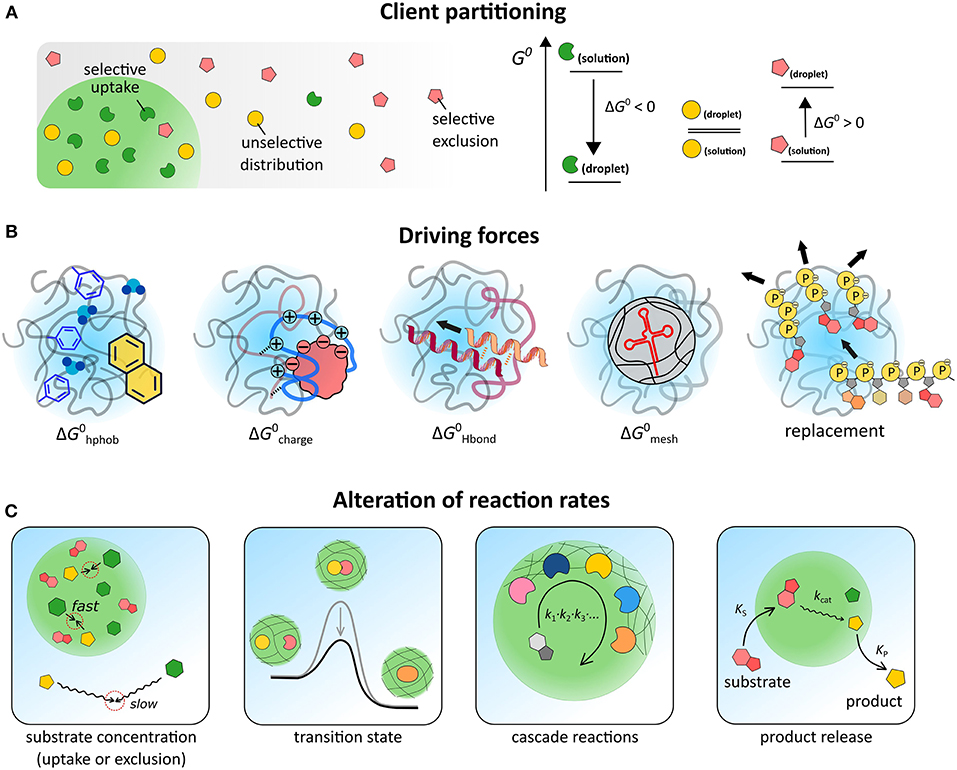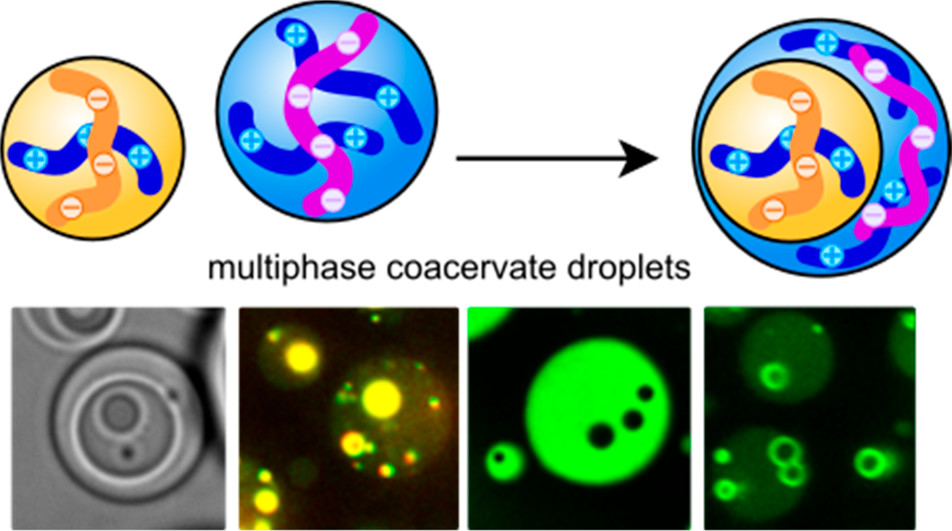Coacervates and Soft Interfaces
Radboud University
Institute for Molecules and Materials
Biomolecular condensates
Phase separation is one of the key ways cells organize their internal physiology. We are interested in understanding the fundamental properties of these condensates imparted by their constituent biomolecules. The chemistry driving underlying interactions within condensates dictate their function, and we are fascinated by how this works!
The local environment within condensates can influence local energy levels of reactions. We are interested in tuning the chemistry of our condensates in order to control chemical reactions. In fact, by harnessing droplets to direct complex biology, for example, by concentrating enzymes within condensates, we hope to show an evolutionary advantage that phase separation can impart to systems in general.
Again inspired by biology, we tend to see condensates being composed of not only liquid-liquid phase separated states, but also other types of materials, from gels to solids. How these different material properties impact the functionality of condensates is a riveting topic of research! Here, we want to understand how amyloids form within the context of condensates.


Key publications:
1. Lu, T., & Spruijt, E. (2020). Multiphase complex coacervate droplets. Journal of the American Chemical Society, 142(6), 2905–2914. https://doi.org/10.1021/jacs.9b11468
2. Nakashima, K. K., Vibhute, M. A., & Spruijt, E. (2019). Biomolecular Chemistry in liquid phase separated compartments. Frontiers in Molecular Biosciences, 6. https://doi.org/10.3389/fmolb.2019.00021
3. Yewdall, N. A., André, A. A. M., Lu, T., & Spruijt, E. (2021). Coacervates as models of membraneless organelles. Current Opinion in Colloid & Interface Science, 52, 101416. https://doi.org/10.1016/j.cocis.2020.101416



